Lonnie Pacelli's Blog, page 2
August 2, 2025
Free 8/5-6: Can You Make a 2AM Meeting?
 Free 8/5-6: Can You Make a 2AM Meeting?
Free 8/5-6: Can You Make a 2AM Meeting?Get it at https://amzn.to/2S2DQMZ
#freebook #leadership #kindle #kindlefire #ebooks #ebook #Kindlefreebooks #Kindledeals #FREE #mustread #goodreads #greatreads #freebie #freebies #kindlebook #ad #teamwork
Published on August 02, 2025 02:35
Done and Done - Promoting Disability Inclusion by Helping Our Autistic Son Transition from College to Workforce
 In December 2015 our son Trevor, who was diagnosed with autism at age 5, graduated from Arizona State University with a degree in Film and Media Studies. Despite the challenges and all of the change Trevor endured in his college experience, he graduated with a 3.5 GPA with very little assistance. He also experienced living by himself, living with nice and not-so-nice roommates, internships, and a summer job as a photographer at a boys camp in North Carolina. He gained a tremendous amount of life experience and learned a ton about himself as a person. His graduation in December put an exclamation point on a very rich college experience. But college is only one race in the marathon called life; his next race - employment - was yet to start. Read more
In December 2015 our son Trevor, who was diagnosed with autism at age 5, graduated from Arizona State University with a degree in Film and Media Studies. Despite the challenges and all of the change Trevor endured in his college experience, he graduated with a 3.5 GPA with very little assistance. He also experienced living by himself, living with nice and not-so-nice roommates, internships, and a summer job as a photographer at a boys camp in North Carolina. He gained a tremendous amount of life experience and learned a ton about himself as a person. His graduation in December put an exclamation point on a very rich college experience. But college is only one race in the marathon called life; his next race - employment - was yet to start. Read more
Published on August 02, 2025 02:35
July 26, 2025
Product Manager Accountabilities (Part II): 7 Essential Product Roadmapping Questions
 In this article series, I am outlining 42 questions that a product manager should ensure are answered across the following SDLC phases:
Product Strategy
– The reason a product exists, and its intended goals.Product Roadmapping – The broad timeline in which future product capabilities are slated for release.Initiative Planning – The definition of a project to deliver capabilities within a budget and schedule timeline.Solution Design – The people, process, systems and policy designs required to deliver the required capabilities.Solution Development – The people, process, systems, and policy capabilities have been developed and are ready for testing, training, and deployment planning.Solution Readiness – All solution aspects are accepted and ready to be deployed.
In this article series, I am outlining 42 questions that a product manager should ensure are answered across the following SDLC phases:
Product Strategy
– The reason a product exists, and its intended goals.Product Roadmapping – The broad timeline in which future product capabilities are slated for release.Initiative Planning – The definition of a project to deliver capabilities within a budget and schedule timeline.Solution Design – The people, process, systems and policy designs required to deliver the required capabilities.Solution Development – The people, process, systems, and policy capabilities have been developed and are ready for testing, training, and deployment planning.Solution Readiness – All solution aspects are accepted and ready to be deployed.In my previous article, I focused on seven product manager’s accountabilities when developing a product strategy. This article focuses on seven questions to be asked when developing a product roadmap.
Read more at ProjectManagement.com.
Published on July 26, 2025 02:36
July 19, 2025
Make Better Life Decisions Using the Nine Crucial Elements to Achieve Good-Enough Contentment
 In
Behind Gold Doors-Nine Crucial Elements to Achieve Good-Enough Contentment
I discuss how to achieve what I term "good-enough" contentment in your life. The book is a story about Ty, who seemed to have it all, then one day it all changed. At the end of his rope, Ty had a chance encounter with a quirky old woman who brought him on a journey to discover the nine crucial elements of good-enough contentment and helped him put a plan in place to fill his contentment gaps. His outlook on life changed forever as a result of him thinking through each of the contentment areas, re-aligning his expectations to think in terms of good-enough, and creating a prioritized plan to work towards good-enough contentment. If you haven't read the book yet I recommend you pick it up :-).
In
Behind Gold Doors-Nine Crucial Elements to Achieve Good-Enough Contentment
I discuss how to achieve what I term "good-enough" contentment in your life. The book is a story about Ty, who seemed to have it all, then one day it all changed. At the end of his rope, Ty had a chance encounter with a quirky old woman who brought him on a journey to discover the nine crucial elements of good-enough contentment and helped him put a plan in place to fill his contentment gaps. His outlook on life changed forever as a result of him thinking through each of the contentment areas, re-aligning his expectations to think in terms of good-enough, and creating a prioritized plan to work towards good-enough contentment. If you haven't read the book yet I recommend you pick it up :-).As a parallel to the book, I developed an excel spreadsheet to help you define good-enough goals and work towards those goals. The Nine Crucial Elements to Achieve Good-Enough Contentment Assessment includes a decision-making grid to help you evaluate two decision alternatives using the nine good-enough elements. By looking at a big decision, i.e. taking a new job versus staying at a current job, using the nine good-enough elements, you will be able to more holistically evaluate your alternatives and make a better decision. You can download the spreadsheet which you should use after reading the book.
Back to my decision to leave Microsoft. I used the decision-making grid to confirm to myself whet
I'd love to hear about your journey; email me at contentment@behindgolddoors.com.
Published on July 19, 2025 02:35
July 12, 2025
Product Manager Accountabilities (Part 1): Product Strategy
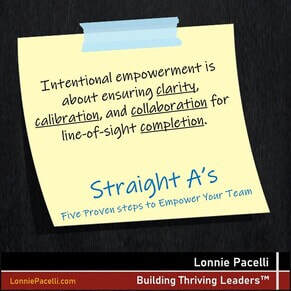 Recently, I introduced the concept of product managers needing to focus on people, process, technology and policy pillars when driving systems solutions. Product managers have accountability as an extension of the project sponsor to ensure each of the four pillars work together in concert as a holistic business system.
Recently, I introduced the concept of product managers needing to focus on people, process, technology and policy pillars when driving systems solutions. Product managers have accountability as an extension of the project sponsor to ensure each of the four pillars work together in concert as a holistic business system.While the concept may hold water, the next logical step to underscore what this looks like is more detail that can be better applied in a product manager’s day-to-day life. To that end, I will examine each of the following typical SDLC phases and outline 42 questions that a product manager should ensure are answered. The phases covered are:Product Strategy – The reason a product exists, and its intended goals.Product Roadmapping – The broad timeline in which future product capabilities are slated for release.Initiative Planning – The definition of a project to deliver capabilities within a budget and schedule timeline.Solution Design – The people, process, systems and policy designs required to deliver the required capabilities.Solution Development – The people, process, systems, and policy capabilities have been developed and are ready for testing, training, and deployment planning.Solution Readiness – All solution aspects are accepted and ready to be deployed.
Before going deeper, let’s level-set on a couple of things:
Read more at ProjectManagement.com.
Published on July 12, 2025 02:27
July 5, 2025
Free 7/8-9: Be a Killer Sponsor
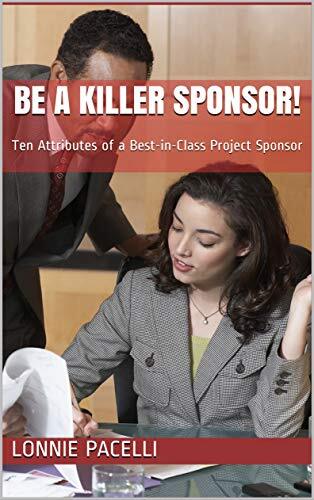 Free 7/8-9: Be a Killer Sponsor
Free 7/8-9: Be a Killer SponsorGet it at https://amzn.to/2OTin7f
#freebook #leadership #kindle #kindlefire #ebooks #ebook #Kindlefreebooks #Kindledeals #FREE #mustread #goodreads #greatreads #freebie #freebies #kindlebook #ad #teamwork #projectmanagement
Published on July 05, 2025 02:29
Be Accessible, Not Open-Door
Excerpted from The Truth about Getting Your Point Across…and Nothing But the Truth
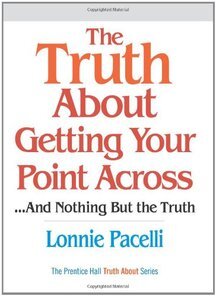 The phrase “I have an open door policy” was very intriguing to me in my early career. As a younger staff person, I envisioned the day when I could be a supportive, empathetic manager who was able to respond to any of my employees’ needs, questions, and comments whenever they needed me. I envisioned people coming to my door (which was open, of course), asking, “Got a minute?” then me leaving my work, talking with the employee, them thanking me for being such an inspirational manager, then me going back to my work and picking up just like I never left it. Ah, the naiveté.
The phrase “I have an open door policy” was very intriguing to me in my early career. As a younger staff person, I envisioned the day when I could be a supportive, empathetic manager who was able to respond to any of my employees’ needs, questions, and comments whenever they needed me. I envisioned people coming to my door (which was open, of course), asking, “Got a minute?” then me leaving my work, talking with the employee, them thanking me for being such an inspirational manager, then me going back to my work and picking up just like I never left it. Ah, the naiveté.
When I actually became a manager, I shortly thereafter gave my empathetic, “I have an open door policy” speech and was ready to solve problems for anyone who crossed my threshold.
Within a few months of my open door policy, I saw my own productivity drop and my frustration level rise because I kept getting interrupted by people taking me up on my open-door policy. My open-door policy soon turned into a series of random interruptions that caused me to not get my stuff done. I came to recognize that I needed to be accessible to people but that I could control the accessibility through scheduled time. Open-door means be accessible, not come in whenever you want.
I realize that I am in some ways debunking a philosophy that a lot of people subscribe to. I also don’t want to be so regimented in my depiction that you think I never permitted drop-ins. Quite the contrary, I really liked the occasional chit-chat or quick questions at the right times. The “be accessible” policy means that you welcome and encourage people to come talk to you, but as a general rule should schedule time with you just as the requestor would with any other meeting that happens in your organization. Dropping in whenever the requestor feels like it shouldn’t be encouraged, particularly when you’re already busy.
Also, “be accessible” doesn’t mean you’ll just see anyone about anything. Depending on your level in the organization and your degree of influence, you can spend the vast majority of your time meeting with people that will either want to sell you something or will want an audience to air their personal grievances. When you get requests for your time, it’s a good idea to ask what the requestor would like from you. You can then make an assessment of whether it is appropriate to meet with the requestor or to suggest another person the requestor should contact.
The “be accessible policy” works, it just takes some discipline on your part. Do the following to help the be accessible policy work for you:Set the expectations up front - It’s very soft & fuzzy to say “my door is always open,” but unless you truly mean it don’t say it. A better expectation to set is “feel free to schedule some time for us to talk.” You still maintain a desire to want to talk to people, but you also set the expectation that they should find time that is workable for you both.Make it easy to schedule time with you – I’ve worked with some managers who intentionally block out their entire schedule for months out and make it very difficult to schedule time to meet. The rationale I’ve heard is “if someone really wants to meet with me they’ll get on the phone with my assistant and try to find a time that works.” Yeesh, what a power trip. If you’re truly so busy that every hour is blocked off for the next several weeks, then that’s understandable. Just don’t intentionally make it difficult for someone to see you.Don’t be afraid to ask a drop-in to come back at a scheduled time – If someone does drop in and you’re unable to accommodate him or her at the time, be deliberate about asking him or her to schedule some time or to come back at another time which is better for you. You’re still being accessible; you’re just deferring the discussion until a more convenient time for both of you.Keep the appointments you make – Sure, stuff happens and you need to reschedule appointments at times. Try not to blow off these informal chats too much or your “be accessible” policy turns into a big joke.
Being available to talk with people or help them through their problems is a wonderful thing. Don’t feel obligated to post an open-door policy. Let people know you’re accessible. Also let them know they should work to schedule time with you so you can give them your undivided attention. You’ll accomplish the same goals as an open-door policy and will get your own work done to boot.
Lonnie Pacelli
Keynote Speaker | Board Director | Autism Advocate | Author | Project Management Expert | Microsoft/Accenture Veteran
See his books on Amazon.
 The phrase “I have an open door policy” was very intriguing to me in my early career. As a younger staff person, I envisioned the day when I could be a supportive, empathetic manager who was able to respond to any of my employees’ needs, questions, and comments whenever they needed me. I envisioned people coming to my door (which was open, of course), asking, “Got a minute?” then me leaving my work, talking with the employee, them thanking me for being such an inspirational manager, then me going back to my work and picking up just like I never left it. Ah, the naiveté.
The phrase “I have an open door policy” was very intriguing to me in my early career. As a younger staff person, I envisioned the day when I could be a supportive, empathetic manager who was able to respond to any of my employees’ needs, questions, and comments whenever they needed me. I envisioned people coming to my door (which was open, of course), asking, “Got a minute?” then me leaving my work, talking with the employee, them thanking me for being such an inspirational manager, then me going back to my work and picking up just like I never left it. Ah, the naiveté.When I actually became a manager, I shortly thereafter gave my empathetic, “I have an open door policy” speech and was ready to solve problems for anyone who crossed my threshold.
Within a few months of my open door policy, I saw my own productivity drop and my frustration level rise because I kept getting interrupted by people taking me up on my open-door policy. My open-door policy soon turned into a series of random interruptions that caused me to not get my stuff done. I came to recognize that I needed to be accessible to people but that I could control the accessibility through scheduled time. Open-door means be accessible, not come in whenever you want.
I realize that I am in some ways debunking a philosophy that a lot of people subscribe to. I also don’t want to be so regimented in my depiction that you think I never permitted drop-ins. Quite the contrary, I really liked the occasional chit-chat or quick questions at the right times. The “be accessible” policy means that you welcome and encourage people to come talk to you, but as a general rule should schedule time with you just as the requestor would with any other meeting that happens in your organization. Dropping in whenever the requestor feels like it shouldn’t be encouraged, particularly when you’re already busy.
Also, “be accessible” doesn’t mean you’ll just see anyone about anything. Depending on your level in the organization and your degree of influence, you can spend the vast majority of your time meeting with people that will either want to sell you something or will want an audience to air their personal grievances. When you get requests for your time, it’s a good idea to ask what the requestor would like from you. You can then make an assessment of whether it is appropriate to meet with the requestor or to suggest another person the requestor should contact.
The “be accessible policy” works, it just takes some discipline on your part. Do the following to help the be accessible policy work for you:Set the expectations up front - It’s very soft & fuzzy to say “my door is always open,” but unless you truly mean it don’t say it. A better expectation to set is “feel free to schedule some time for us to talk.” You still maintain a desire to want to talk to people, but you also set the expectation that they should find time that is workable for you both.Make it easy to schedule time with you – I’ve worked with some managers who intentionally block out their entire schedule for months out and make it very difficult to schedule time to meet. The rationale I’ve heard is “if someone really wants to meet with me they’ll get on the phone with my assistant and try to find a time that works.” Yeesh, what a power trip. If you’re truly so busy that every hour is blocked off for the next several weeks, then that’s understandable. Just don’t intentionally make it difficult for someone to see you.Don’t be afraid to ask a drop-in to come back at a scheduled time – If someone does drop in and you’re unable to accommodate him or her at the time, be deliberate about asking him or her to schedule some time or to come back at another time which is better for you. You’re still being accessible; you’re just deferring the discussion until a more convenient time for both of you.Keep the appointments you make – Sure, stuff happens and you need to reschedule appointments at times. Try not to blow off these informal chats too much or your “be accessible” policy turns into a big joke.
Being available to talk with people or help them through their problems is a wonderful thing. Don’t feel obligated to post an open-door policy. Let people know you’re accessible. Also let them know they should work to schedule time with you so you can give them your undivided attention. You’ll accomplish the same goals as an open-door policy and will get your own work done to boot.
Lonnie Pacelli
Keynote Speaker | Board Director | Autism Advocate | Author | Project Management Expert | Microsoft/Accenture Veteran
See his books on Amazon.
Published on July 05, 2025 02:29
June 27, 2025
Execute...or Be Executed
 Talk about your character-building experience...
Talk about your character-building experience...I was a young hot-shot project manager on an engagement that I had sold to a client. I had it all planned out and had delusions of completely delighting my client with an issue-free project. It all seemed so simple, then the project started...and never finished.
I'll spare you the gory details of my harrowing experience but what I can tell you is that I put more focus on selling and planning the project than I did on its execution. I took a naive attitude of the project being able to pretty much run itself with some junior analysts running the day-to-day aspects of the work. It blew up in my face and I got booted from the client never to return again. It was my inaugural visit to the project management guillotine. Any project manager who has been around the block a few times has experienced a visit to the project management guillotine. Perhaps it was with a sponsor, management, or a customer. The project either had a massive schedule slip, cost overrun, or scope slash (or sometimes all three...now that's a party!) and the project manager was first in line at the guillotine. Some of my most uncomfortable situations in my 20+ years as a professional have involved me getting my head handed to me on a silver platter because I bungled a project.
Amazon.com WidgetsVisiting the guillotine was very uncomfortable but at the same time was a great learning experience. It taught me that I not only needed to be good at planning a project, I also needed to excel in its delivery. It wasn't enough to be only peripherally involved in a project or to be its administrator. I had to know what was happening, be on the lookout for problems, and squash the problems before they had a chance to spin out of control. It taught me that I needed to avoid the guillotine by being able to execute. It was that simple: Execute or be executed.
Avoid a trip to the project management guillotine by keeping some of these simple tips in mind:Break large projects down into mini projects that are three months in duration - I've rarely seen a project manager who is running a long-duration project raise a schedule issue early on in the project. Most times, schedule issues get raised during the last third of the project. Is that because the last third of the project is usually the most complex in nature? Hardly. It typically means that the project manager either wasn't aware of earlier problems or just slipped tasks without raising any alarm bells that the overall project was slipping. Break larger projects down to short-duration three month mini projects which have a clearly defined deliverable associated with the project's completion. Running mini projects not only keep everyone on their toes with the completion date just around the corner but can be an fantastic motivator for project team members to git-er-done. Communicate the facts regularly - Regardless of whether the news is good or bad, the project manager absolutely has to establish and maintain a steady rhythm of communication about how the project is going. I personally like doing a pointed weekly status which focuses on cost, schedule, risks and issues. If there is good news to share, do it. If there is bad news to share, do it and tell what you're doing about it. Don't suppress communication waiting for a "Hail Mary" to save the project. It likely won't happen.Avoid "whine and cheese parties" when raising issues - Yes, issues are going to happen, and yes, some of them can cause your project to fail. This isn't the time to show panic or to get on your soap box about how tough the project is. As the project manager, your job is to raise the big issues, articulate what needs to happen to resolve the issues, put a name next to each issue for resolution, then hold those people accountable for resolution. Keep a cool head and stay focused on resolution, don't use the platform as a means to say "I told you so."Maximize the value of your trips back to the well - So okay, sometimes you can't keep it all together without revising either cost, schedule or scope. When faced with the situation of having to go back to the sponsor (or the person writing the checks) I've found a couple of things to be very helpful: Give the sponsor alternatives which allow him or her to choose between relaxing scope, schedule, and/or cost. Too many times I've seen project managers pre-assume what needs to happen and not present alternatives to the sponsor. Allow the sponsor to be part of the decision making process.Minimize the number of times you have to go back to the well. It is very frustrating for a sponsor to agree to a scope/schedule/cost variance in one month, only to have the project manager come back the next month looking for an additional variance. Understand the implications of the variance and present reality to your sponsor.Ask for help, don't abdicate responsibility or tough it out yourself - I learned this lesson very early on in my project management career. As a young buck I saw it as a sign of weakness to ask someone for help if I got in trouble. Asking for help meant I wasn't cut out for the job and management would view me as incompetent. Through the years I've refined my attitude about asking for help pretty significantly. It's not about raising the flag any time the smallest issue crops up; it's about knowing what issues are within my domain to fix and knowing what issues can best be addressed by someone else. There's not a good reason to try to tough it out yourself; ask for help when you're in trouble. On the other end of the spectrum is the PM who leaves the helm. Rather than trying to fix a project problem, I've seen the project manager run for the exits or try to get assigned on another project to get out from under the mess. As the PM you can't run for the exits; you've got to stay with the ship and work through the tough problems. Just don't swing the pendulum too far the other way and forget to ask for help.
Being a great salesperson or schmoozer isn't enough to ensure your project delivers results. Great project managers know how to listen to their project and deliberately execute to ensure success. Fall short on the execution and you've pretty much guaranteed yourself a visit to the woodshed. Lonnie Pacelli
Keynote Speaker | Board Director | Autism Advocate | Author | Project Management Expert | Microsoft/Accenture Veteran
See his books on Amazon.
Published on June 27, 2025 02:44
June 21, 2025
Drive A Tight Agenda, Don't Let It Drive You
Excerpted from The Truth about Getting Your Point Across…and Nothing But the Truth
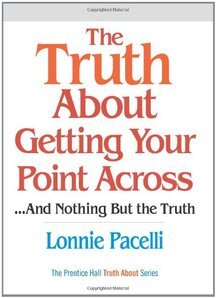 A colleague of mine was responsible for running a bi-weekly two-hour team meeting. He took great care to develop a very full, detailed agenda. As we would get into the meeting, it would only take us getting to agenda item one before the meeting was behind schedule.
A colleague of mine was responsible for running a bi-weekly two-hour team meeting. He took great care to develop a very full, detailed agenda. As we would get into the meeting, it would only take us getting to agenda item one before the meeting was behind schedule.
During the entire time that my colleague ran these meetings, we never got more than halfway through the agenda before adjourning. The team got so used to not making it through the agenda that there wasn’t even an attempt to try to stay on schedule. The agenda and associated times were completely unrealistic and were worthless as a meeting management tool.
An effective agenda goes beyond start time, location, topics, and durations. Effective agendas do the following:
Support the meeting purpose Set the expectations of attendees as to what will be discussedInform attendees of any preparation that will be required prior to the meetingGive the meeting leader a roadmap for driving the agenda
Permit adequate time to cover each item
Allow the meeting leader to adjust the agenda easily if the meeting gets behind schedule Having said all this, there is a guiding principle the meeting owner needs to follow: The meeting owner drives the agenda, not the other way around. There are times where you may have a concise meeting purpose and specific agenda items to address the meeting purpose, but the actual meeting deviates from the agenda. Be open to the agenda change; just make sure the meeting purpose is still being met. Doing this requires the meeting owner be very in-tune to what is going on in the meeting and footing it back to what is happening on the agenda. If the actual meeting is deviating from the agenda, the meeting owner needs to consciously decide if the deviation is appropriate or if it needs to be nipped in the bud. There’s no secret sauce on this; it means keeping the original meeting’s purpose in mind, observing what is actually happening in the meeting, and continually assessing whether the meeting’s purpose is being met.
So, what are some good tips to developing effective agenda? Consider these next time you have to plan a meeting:Have a tight, focused meeting purpose – You’ve called the meeting for a reason; make sure that the purpose is explicit and achievable. A good sanity check on this is that you should be able to complete this sentence: “At the end of this meeting we should be able to _______.”Cross-foot your agenda items with the meeting purpose – As you’re crafting your agenda items, make sure that each item is doing something to support the meeting purpose. If the items don’t support the meeting purpose either change the agenda item or change the purpose. Don’t confuse the attendees by having agenda items that don’t support the meeting purposeBe realistic with allocated agenda item times – Don’t put overly aggressive times on the agenda that you in your heart know you’re not going to achieve. Planning 90 minutes worth of meeting in 60 minutes means you’ll only get through 2/3 of the meeting or the meeting will run over by at least 30 minutes. Don’t wish for best case; put reality down.Distribute the agenda at least one day before the meeting – Meeting attendees want to know what is going to be discussed and if there is preparation that is needed prior to the meeting. Give them a day if possible to review the agenda and get mentally prepared for the meeting.Put the most important agenda items at the front of the meeting – Cover your top items first. There are two reasons for this: first, you’ll ensure that the most important items get covered. Second, you’ll keep attendee attention better by covering the most important items earlier. If they are put later in the agenda then you’ll see some chomping at the bit as you go through lesser important agenda items first.Have as your last agenda item an “action items review” section – I’ve seen way too many meetings happen in my career where the end of the meeting comes, everyone leaves, but there is no agreement on what actions need to be taken out of the meeting. In your action items review, indicate what the action items are, who is responsible for each action item, and when the action item needs to be completed by.Have a contingency plan in place for when agenda items run over – Even with the best-planned meetings, sometimes agenda items take longer than expected. Have a plan for how you are going to accommodate the change, which could mean shortening some other agenda items or eliminating an agenda item completely
Build tight, realistic, achievable agendas. You’ll get more done, reduce attendee frustration, and make the best use of everyone’s time. Just don’t be a slave to the agenda if you see the agenda won’t accomplish the meeting’s purpose.
Lonnie Pacelli
Keynote Speaker | Board Director | Autism Advocate | Author | Project Management Expert | Microsoft/Accenture Veteran
See his books on Amazon.
 A colleague of mine was responsible for running a bi-weekly two-hour team meeting. He took great care to develop a very full, detailed agenda. As we would get into the meeting, it would only take us getting to agenda item one before the meeting was behind schedule.
A colleague of mine was responsible for running a bi-weekly two-hour team meeting. He took great care to develop a very full, detailed agenda. As we would get into the meeting, it would only take us getting to agenda item one before the meeting was behind schedule.During the entire time that my colleague ran these meetings, we never got more than halfway through the agenda before adjourning. The team got so used to not making it through the agenda that there wasn’t even an attempt to try to stay on schedule. The agenda and associated times were completely unrealistic and were worthless as a meeting management tool.
An effective agenda goes beyond start time, location, topics, and durations. Effective agendas do the following:
Support the meeting purpose Set the expectations of attendees as to what will be discussedInform attendees of any preparation that will be required prior to the meetingGive the meeting leader a roadmap for driving the agenda
Permit adequate time to cover each item
Allow the meeting leader to adjust the agenda easily if the meeting gets behind schedule Having said all this, there is a guiding principle the meeting owner needs to follow: The meeting owner drives the agenda, not the other way around. There are times where you may have a concise meeting purpose and specific agenda items to address the meeting purpose, but the actual meeting deviates from the agenda. Be open to the agenda change; just make sure the meeting purpose is still being met. Doing this requires the meeting owner be very in-tune to what is going on in the meeting and footing it back to what is happening on the agenda. If the actual meeting is deviating from the agenda, the meeting owner needs to consciously decide if the deviation is appropriate or if it needs to be nipped in the bud. There’s no secret sauce on this; it means keeping the original meeting’s purpose in mind, observing what is actually happening in the meeting, and continually assessing whether the meeting’s purpose is being met.
So, what are some good tips to developing effective agenda? Consider these next time you have to plan a meeting:Have a tight, focused meeting purpose – You’ve called the meeting for a reason; make sure that the purpose is explicit and achievable. A good sanity check on this is that you should be able to complete this sentence: “At the end of this meeting we should be able to _______.”Cross-foot your agenda items with the meeting purpose – As you’re crafting your agenda items, make sure that each item is doing something to support the meeting purpose. If the items don’t support the meeting purpose either change the agenda item or change the purpose. Don’t confuse the attendees by having agenda items that don’t support the meeting purposeBe realistic with allocated agenda item times – Don’t put overly aggressive times on the agenda that you in your heart know you’re not going to achieve. Planning 90 minutes worth of meeting in 60 minutes means you’ll only get through 2/3 of the meeting or the meeting will run over by at least 30 minutes. Don’t wish for best case; put reality down.Distribute the agenda at least one day before the meeting – Meeting attendees want to know what is going to be discussed and if there is preparation that is needed prior to the meeting. Give them a day if possible to review the agenda and get mentally prepared for the meeting.Put the most important agenda items at the front of the meeting – Cover your top items first. There are two reasons for this: first, you’ll ensure that the most important items get covered. Second, you’ll keep attendee attention better by covering the most important items earlier. If they are put later in the agenda then you’ll see some chomping at the bit as you go through lesser important agenda items first.Have as your last agenda item an “action items review” section – I’ve seen way too many meetings happen in my career where the end of the meeting comes, everyone leaves, but there is no agreement on what actions need to be taken out of the meeting. In your action items review, indicate what the action items are, who is responsible for each action item, and when the action item needs to be completed by.Have a contingency plan in place for when agenda items run over – Even with the best-planned meetings, sometimes agenda items take longer than expected. Have a plan for how you are going to accommodate the change, which could mean shortening some other agenda items or eliminating an agenda item completely
Build tight, realistic, achievable agendas. You’ll get more done, reduce attendee frustration, and make the best use of everyone’s time. Just don’t be a slave to the agenda if you see the agenda won’t accomplish the meeting’s purpose.
Lonnie Pacelli
Keynote Speaker | Board Director | Autism Advocate | Author | Project Management Expert | Microsoft/Accenture Veteran
See his books on Amazon.
Published on June 21, 2025 02:34
June 13, 2025
Adopting an Investor’s Mindset: 5 Pillars to Follow
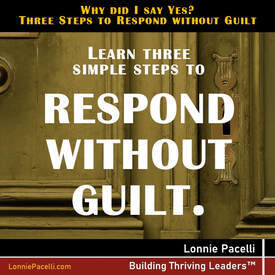 Several years ago, I invested in a business with someone who was my best friend at the time. It all started with a lot of excitement and dreams of how we were going to change the world together.
Several years ago, I invested in a business with someone who was my best friend at the time. It all started with a lot of excitement and dreams of how we were going to change the world together.As time progressed, reality set in. The idea was great, but the financial return wasn’t there. My best friend worked incredibly hard but just didn’t have the right skill set the business demanded. We weren’t aligned on my engagement, particularly as I saw the financial demands of the business exceed my willingness to provide. I ended up shutting off funding, the business failed, and I lost a friend.
Ah, the naivete.
Read more at ProjectManagement.com.
Published on June 13, 2025 07:45



